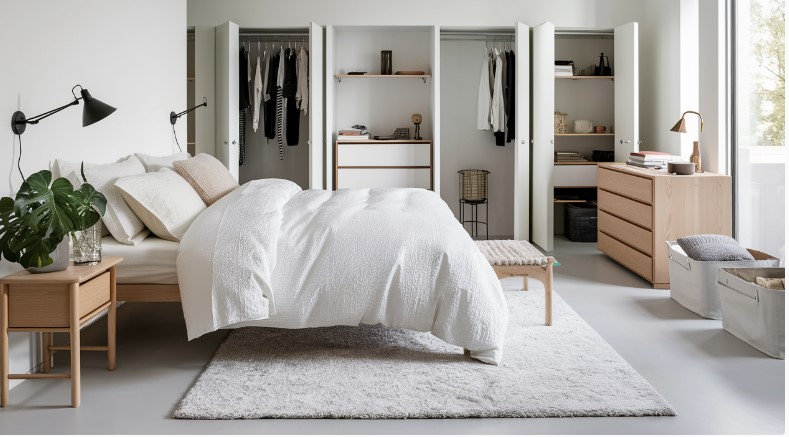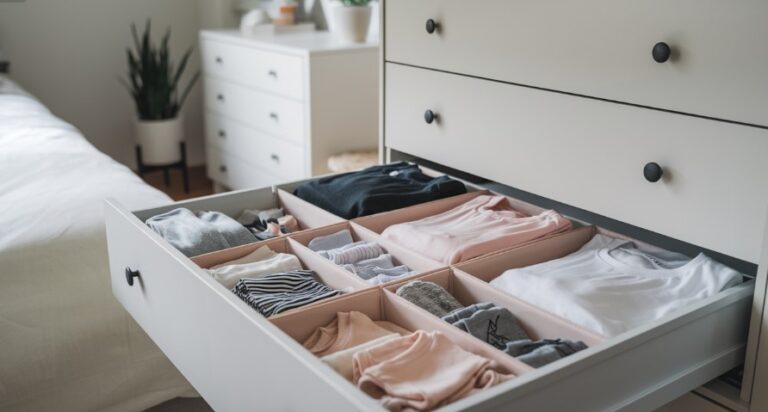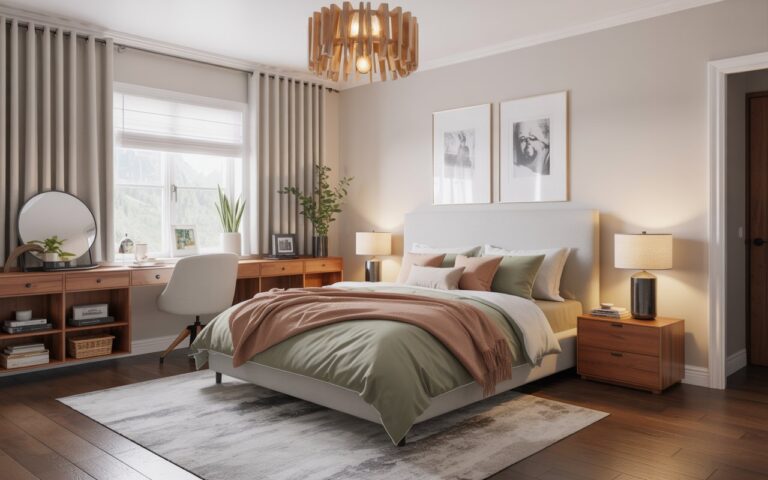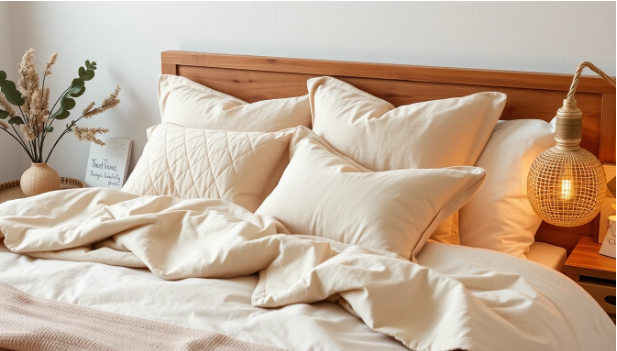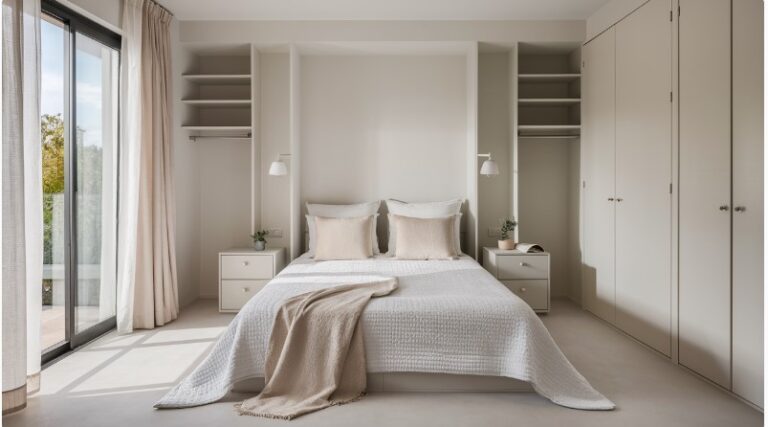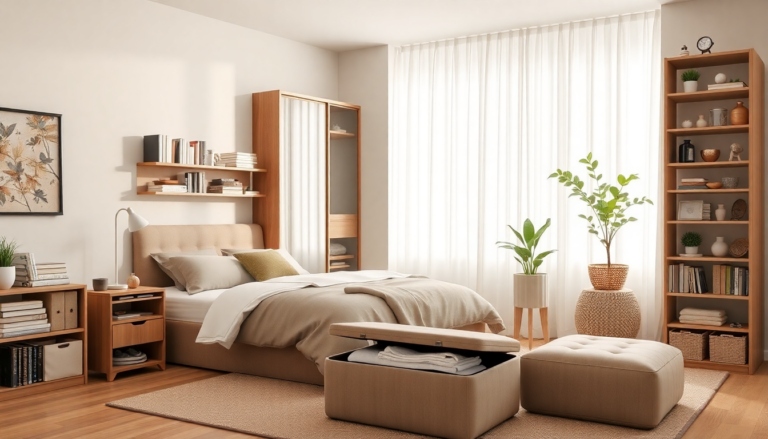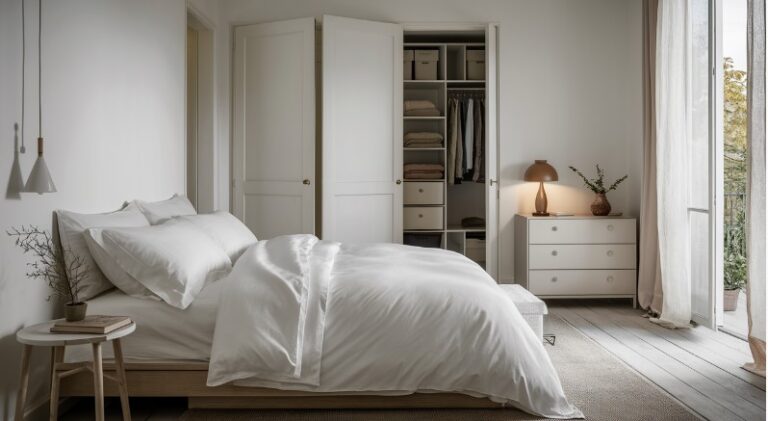6 Quick Tips To Bedroom Furniture Decluttering
Cleaning up your bedroom furniture can make it calm and restful. It’s also easier to keep tidy.
Use simple tips to remove junk, create space, and declutter your bedroom.
This post offers efficient strategies to keep only what you need or love.
If your dresser is crowded, your bedside tables messy, or your closet stuffed, these tips will help.
Decluttering should not take much time. The right approach yields quick results. It makes your bedroom feel lighter and more organized. Ready to refresh your space? Let’s begin.
1. Assess Your Space
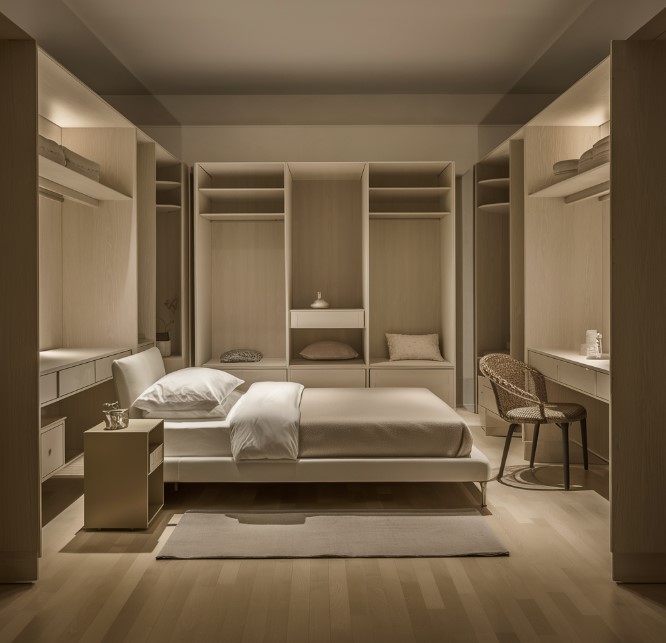
First, examine your bedroom. Check if the furniture arrangement suits your lifestyle and comfort.
Is each piece serving a purpose, or is it occupying space without any function? First, identify which items you use often. Then, find the decorative or unused ones.
For instance, if you have a bulky armchair you rarely sit in, it may be a candidate for removal.
This applies to extra dressers, nightstands or old nonfunctional furniture.
Consider whether each piece adds value, both in terms of use and aesthetics. A simpler furniture layout frees up floor space. It also makes the room feel more open and easier to maintain.
A minimalist furniture style can turn your bedroom into a calm, clutter-free retreat. We will tailor it to your needs.
2. Create a Decluttering Plan
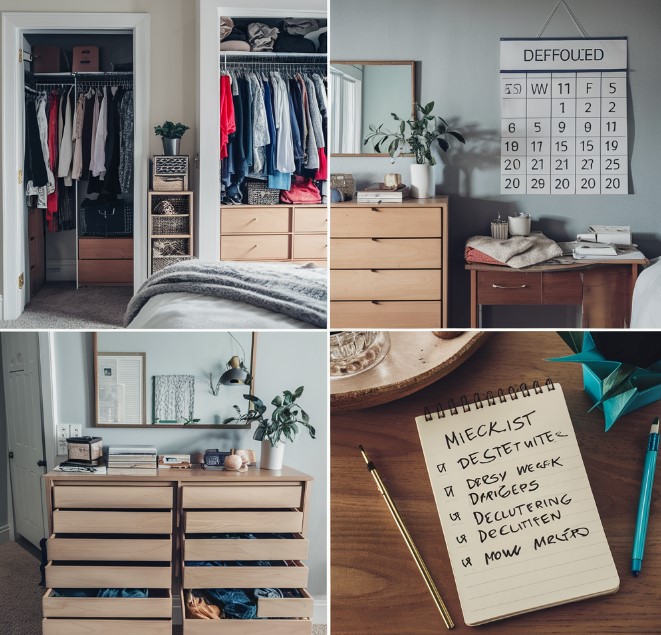
A decluttering plan for your bedroom furniture keeps you organized and motivated.
Set clear, specific goals for each session. Focus on one item, like the dresser, one area, like the closet.
Break tasks into smaller parts, to avoid feeling overwhelmed. You can tackle each section with more energy and focus.
Scheduling regular decluttering sessions is also essential for maintaining progress.
Set aside a consistent day or time each week or month to assess and refresh your space. This routine prevents clutter from building up again and keeps your bedroom organized.
You may want to track your progress. Note what you’ve completed or set milestones. This can boost motivation and give you a sense of accomplishment.
3. Clear Surfaces First
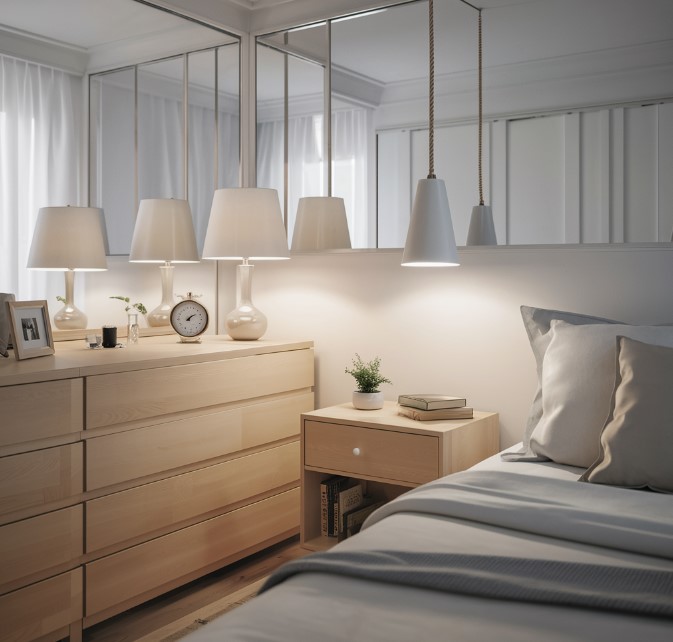
To declutter your bedroom, start with visible surfaces. Focus on dressers, nightstands, and other furniture tops.
These areas often collect unwanted or rarely used items. This can create a cluttered, overwhelming space.
Start by removing anything nonessential to your daily routine. This includes spare change, old receipts, and random accessories. If needed, find a spot for these items elsewhere.
Only keep items that are functional or add a touch of beauty, like a favorite lamp, clock, or cherished photo.
When surfaces are clear, the bedroom immediately feels more open, calm, and organized.
By starting with these high-visibility zones, you will build momentum and set the tone for a decluttered, peaceful environment.
4. Optimize Storage Solutions
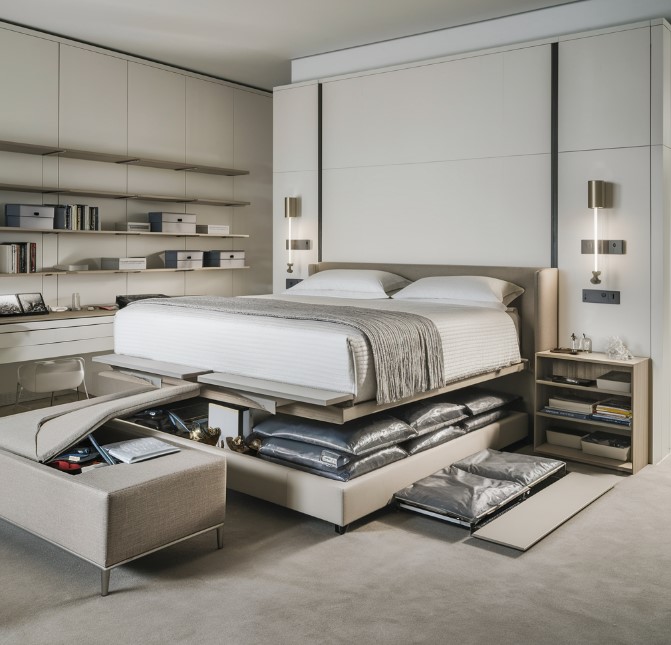
Maximize space and reduce clutter, choose furniture with built-in storage.
Like beds with storage drawers, ottomans with hidden storage, and nightstands with shelves.
These pieces provide hidden spots for essentials, minimizing visible clutter.
Use under-bed storage for seasonal items and things you do not need daily.
Slim, roll-out storage boxes or vacuum-sealed bags are perfect. They allow for easy access while keeping your room tidy.
Store lesser-used items under the bed. This frees up closet and drawer space for items you need more often.
Another option is wall-mounted shelves. They add storage without using floor space.
This approach keeps surfaces clear. It lets you display décor or store books.
5. Limit Decorative Items
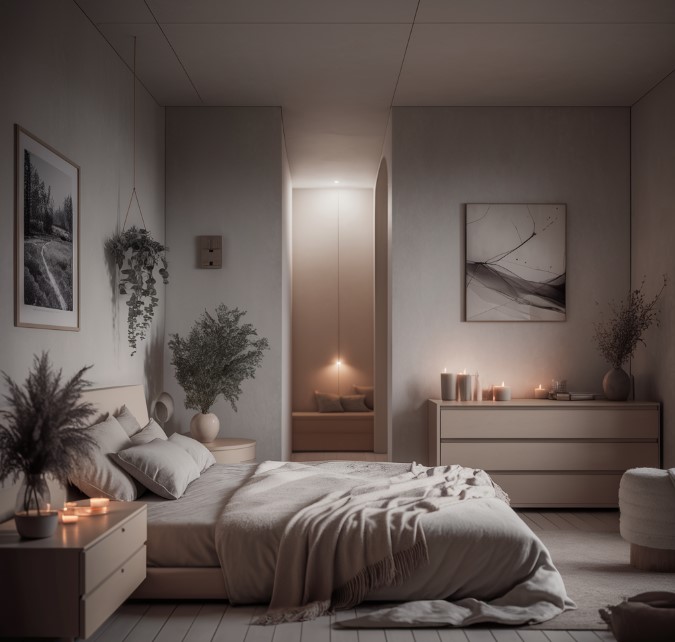
To maintain a serene, clutter-free bedroom, keep decorative items to a minimum. Visual clutter can make the room feel chaotic, reducing its calming effect.
Choose a few meaningful decor items. A framed photo, a small plant, or a cozy candle work well. These add a touch without overwhelming the space.
Focus on items that bring a sense of relaxation, such as a soft throw blanket or a tranquil piece of art.
Avoid cluttering every surface. Let them breathe. It makes each piece more intentional and impactful.
Remember, less is more. Choose decor that matches your style and brings peace. Limit items to those that have a purpose or inspire joy.
This approach improves the room’s look. It also keeps a peaceful vibe. It creates a perfect escape from daily stress.
6. Regular Maintenance Habits
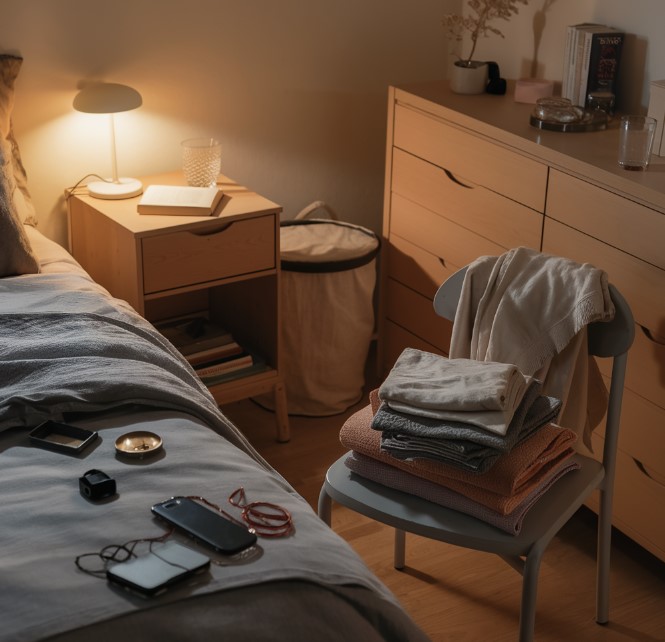
To keep your bedroom tidy, adopt simple daily or weekly habits.
Take a few minutes to clear your nightstand and dresser of items like books, chargers, and glasses. This quick task stops clutter from growing and keeps your space calm and organized.
Always return items to their places. Put laundry in hampers and small items in drawers or containers.
Once a week, check your surfaces to remove unnecessary items.
These habits prevent buildup and keep your furniture and surfaces clean and inviting.
You’ll wake up to a fresh, clutter-free room. This makes it easier to relax at night and stay tidy without long hours of work.
Conclusion
In conclusion, decluttering bedroom furniture can transform your space into a calm, inviting retreat.
Start by assessing each item’s purpose and eliminate pieces that add clutter rather than function.
Prioritize multi-functional furniture like storage beds or nightstands with drawers to maximize space efficiency.
Use organizers within drawers to keep essentials tidy and easily accessible. Focus on quality over quantity, keeping only furniture that enhances comfort and aesthetic harmony.
Regularly revisiting your bedroom setup and removing unnecessary items can maintain a fresh, uncluttered feel, creating a more peaceful environment for relaxation and rest.
Following these quick tips can make decluttering manageable, helping you create a simplified, stylish, and serene bedroom.
1. What are the first steps in deciding which bedroom furniture to keep or let go?
First, assess your space and needs to decide which bedroom furniture to keep or discard.
Consider your bedroom’s size. Only keep pieces that fit and are useful.
Next, check each item’s condition, style, and usability. Ask if it adds functionality or just adds clutter.
For instance, a large dresser without storage or an overly bulky bed frame should go.
Think about your lifestyle and comfort. Do you really need a nightstand? Would wall-mounted shelves be better?
Choose furniture that serves multiple purposes. A bed with storage or a foldable desk is ideal.
Lastly, be honest about your attachments. If something doesn’t fit your lifestyle, it’s okay to let it go.
This method helps you keep only what improves your bedroom’s function and look.
2. How can I declutter bulky furniture without sacrificing comfort?
To reduce bulky furniture but keep comfort, try these tips:
Choose multifunctional pieces. Look for items like storage beds or sofas with hidden spaces. This cuts down on extra furniture.
Downsize: Swap large items for smaller ones. A compact dresser, a simple bed, or a narrow desk can save space without losing comfort.
Choose lighter materials: Opt for metal over heavy wood to keep things airy yet sturdy.
Maximize storage: Select pieces with hidden storage, like ottomans or benches. This keeps clutter at bay.
Create openness: Space furniture to improve airflow and make the room feel larger.
These steps help you stay comfortable while keeping your space uncluttered.
3. What are some quick ways to rearrange bedroom furniture for a more open feel?
To make your bedroom feel larger, follow these steps:
Position the bed on the largest wall to serve as the focal point of the room. This adds balance and a sense of space.
Keep Windows Clear: Arrange furniture to avoid blocking windows. This allows natural light in, enhancing the room’s openness.
Choose Simple Furniture: Select smaller, sleek pieces to cut down on clutter. Consider storage options, like a bed with drawers or a bench at the foot.
Create Separate Areas: If space permits, distinguish between sleeping, reading, and work areas. This prevents overcrowding.
Maintain Open Space: Avoid cramming the room. Keep furniture away from walls to improve airflow and openness.
Opt for Light Colors and Mirrors: Use light shades for walls and furniture. Add mirrors to create the illusion of more space.
4. Are there specific types of bedroom furniture that often contribute to clutter?
Yes, some bedroom furniture adds to clutter more than others do.
Large furniture: Big beds, dressers, and wardrobes can make small rooms feel cramped. They often have many drawers or shelves, leading to unnecessary storage.
Extra storage pieces, like ottomans and benches, often get overstuffed. Bedside tables with hidden compartments also suffer from this. Though practical, they become catchalls for rarely used items.
Non-functional pieces are items without a clear purpose. They include excessive décor and large mirrors. They create clutter without adding value.
Open shelves: These can become cluttered quickly without proper organization.
Choosing minimalistic and functional furniture helps keep a bedroom streamlined and clutter-free.
5.How do I know if a piece of furniture is worth keeping in a minimalist bedroom?
To decide on furniture for a minimalist bedroom, consider these questions:
Functionality: Does it serve a purpose? Keep essentials like beds or dressers.
Condition: Is it in good shape? Damaged or uncomfortable pieces should go.
Space Efficiency: Does it save space? Avoid items that cause clutter.
Aesthetic Simplicity: Does it fit a simple look? Complex designs are a no-go.
Emotional Value: Does it mean something to you? If it brings joy, consider keeping it.
These criteria help you choose what to keep.
6. What role does multifunctional furniture play in decluttering a bedroom?
Multifunctional furniture is key to a tidy bedroom. It saves space and cuts down on extra pieces.
These items serve multiple purposes, keeping the room organized.
For instance, a bed with storage eliminates the need for a dresser. Also, a fold-out desk or wall shelves save floor space. They provide work or storage space.
Multifunctional furniture makes the room more spacious and efficient. It does this by reducing the number of pieces.
It also keeps essentials close while promoting a simple, clean look.
This is crucial in smaller bedrooms, where every inch matters.
Such furniture makes organization easier and helps maintain a clutter-free space.
7. How can I declutter bedroom furniture while working within a limited budget?
You can declutter bedroom furniture on a budget with strategic steps.
First, review your furniture. Remove unused or oversized items.
Next, choose multifunctional pieces, like storage beds or fold-out desks.
For outdated or too-large furniture, consider upcycling. A new coat of paint or hardware can refresh old dressers.
Use clever storage solutions to save space. Under-bed bins and hanging organizers are great options.
When shopping, look for affordable, space-saving pieces that match your style. Explore secondhand stores, online marketplaces, and discount furniture shops.
Finally, declutter regularly. Keep only furniture that adds value and function.
